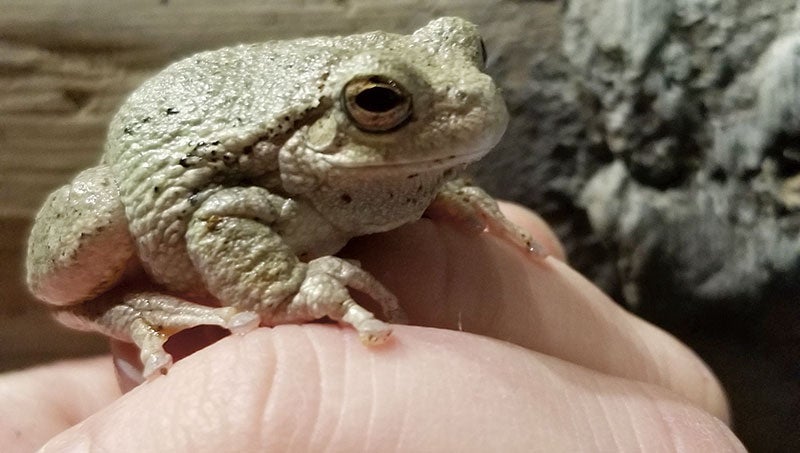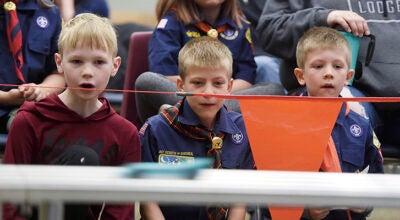Nature notes: Frogs in February?
Published 6:10 am Wednesday, February 5, 2020

- A picture of a tree fog that can be found at the Jay C. Hormel Nature Center. Photo provided
By Kelly Bahl
Jay C. Hormel Nature Center Teacher/Naturalist
Wintertime is the time that we think about hibernation, and usually we think of things like bears, chipmunks, bats, even groundhogs. But, what about some of our more cold-blooded animal friends?
Different animals have different ways to help them get through the winter. Take frogs for example. In the midst of February it is extremely unlikely that you will come across a frog active anytime this month but they do not disappear, they are hunkered down for the cold.
Some aquatic frogs like leopard frogs hang out under water all winter (below the ice, but not buried in mud) where they will slowly swim around. If we take a trek from the water onto land, we find other types of amphibians hibernating. The American toad has specially designed backed legs to dig and burrow down into the soil to wait out the cold winter months under the frost line. Some other smaller frogs that you can usually find on land here in Minnesota are ones like wood frogs, chorus frogs, spring peepers, and gray tree frogs. They do not have the adaptations to help burrow under soils so they have to settle for burying themselves underneath leaf litter as well as in cracks in the ground and in felled trees or logs. As you can imagine, the frost and frozen temperatures are not stopped by a mere two inches of leaves, nor does an old dead log provide protection from the freezing temperatures we are all accustomed to in the wintertime. How are the small, cold-blooded frogs supposed to survive the cold all winter long?
Believe it or not, the answer is antifreeze. The small terrestrial frogs that cannot escape the cold by burrowing under the frost line rely on a high concentration of glucose in vital organs to make sure that they do not freeze solid. The non-vital organs along with the rest of the body cavity will freeze completely through, ice crystals and all.
The partially frozen frogs will not only stop breathing, but their heart will stop beating until the frog thaws back out. When a living creature stops breathing, its heart stops beating, and is frozen solid you would think it would be dead. Not these frogs. They just wait for the spring thaw when their heart and lungs defrost and can function again as if nothing ever happened.
Spring is about rebirth and for frogs, it sometimes means coming back from the dead. If you happen to come across a frog outside in your winter activities remember to leave it be. It is highly adapted for our Minnesota winters.
Upcoming Events at the Hormel Nature Center
• Happening now: Sign up for Family Maple Syruping Class opens
• Feb. 15: Backyard Bird Count / Bird Banding, hosted by Austin Audubon in Ruby Rupner Auditorium, 9-11:30 a.m. Open to the public.
• Feb 17: Closed for Presidents Day
• Feb. 22-23: Paul LeDuc: Endangered Animals Art Show – all day at the Nature Center
• Feb 22: Special Art Program by Paul LeDuc and his team, 1:30-2:30 p.m. at the nature center. Please RSVP by calling or emailing the nature center 1-507-437-7519; info@hormelnaturecenter.org





